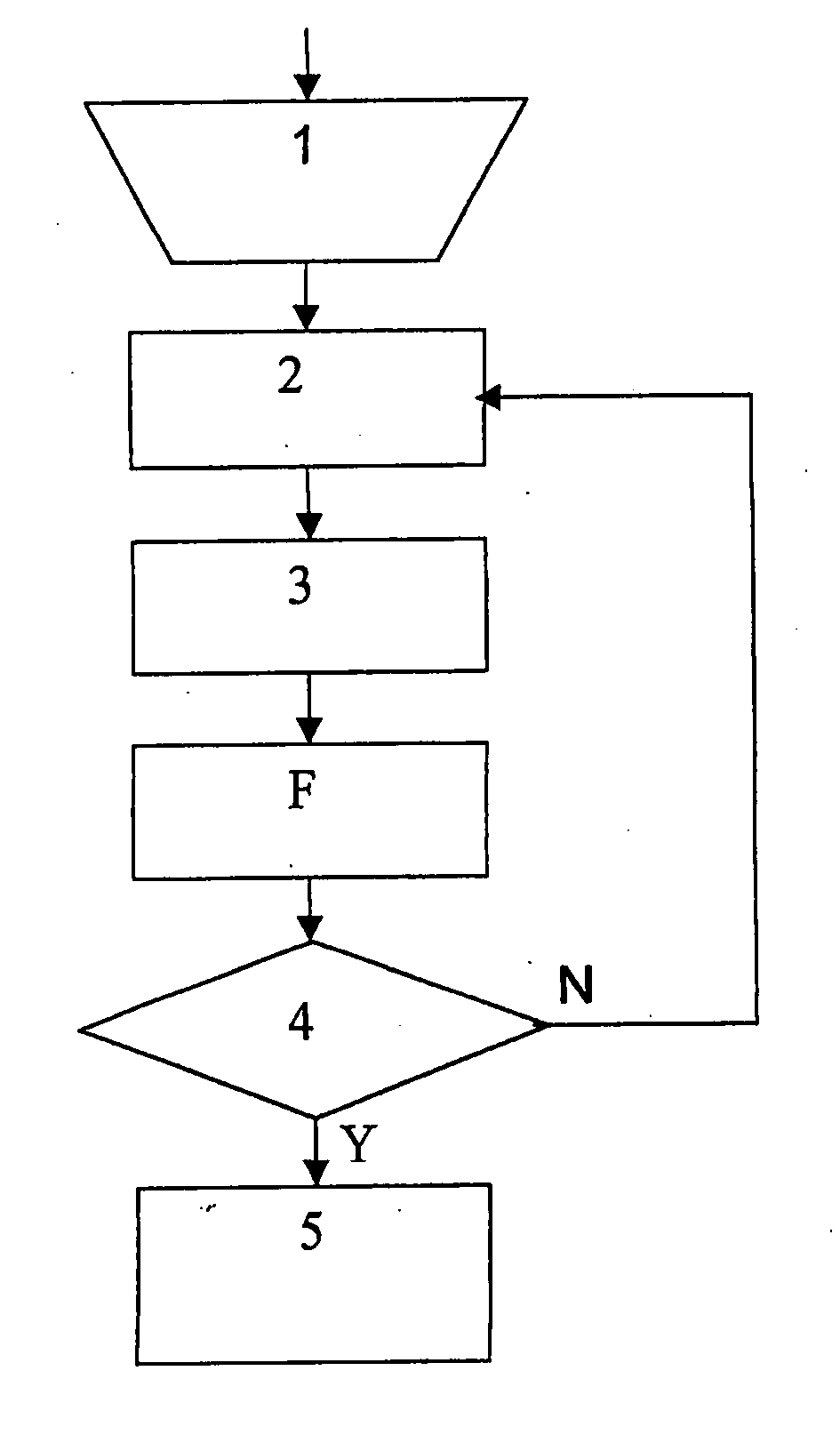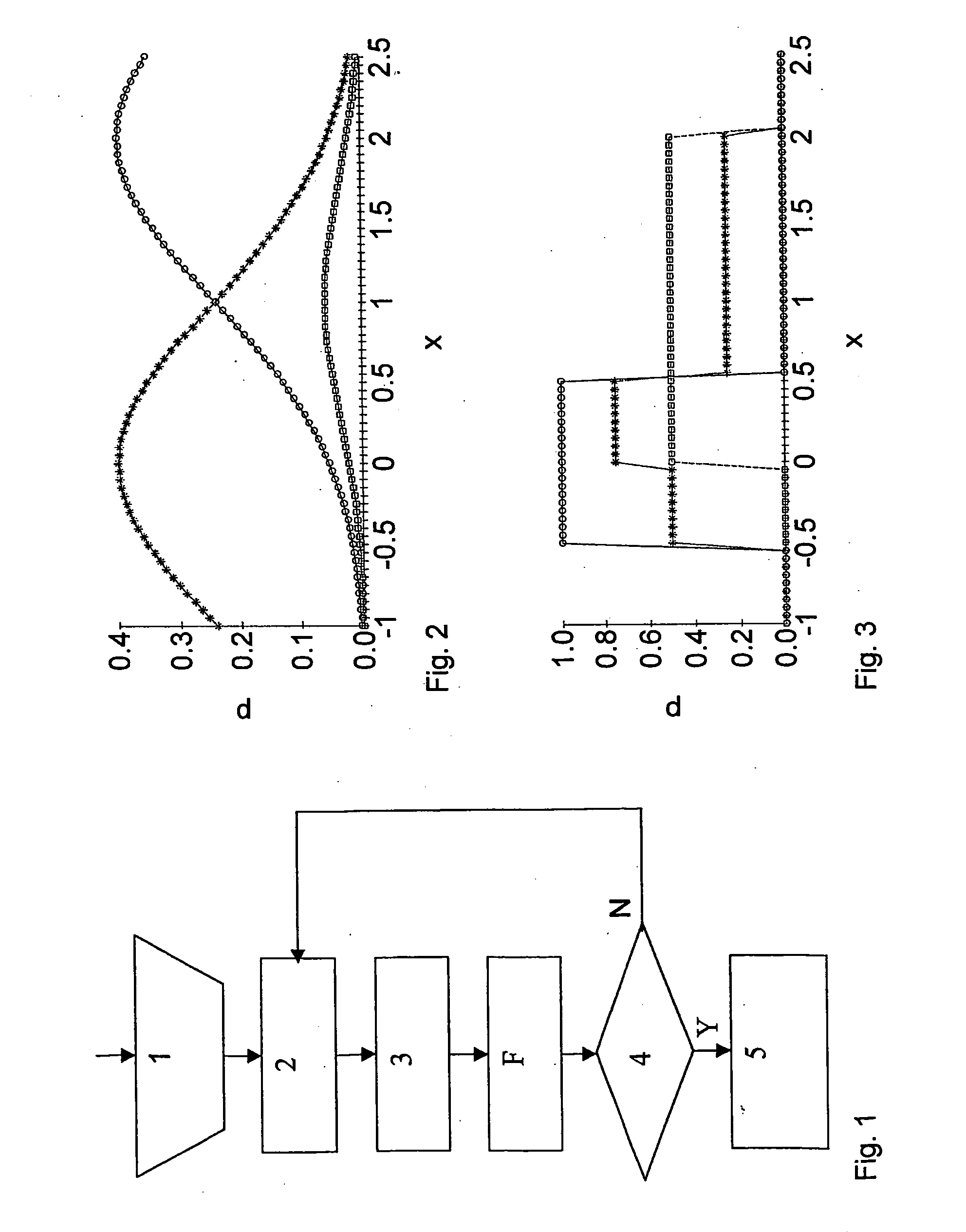Sampling method
a sampling method and sampling method technology, applied in the field of sampling methods, can solve the problems of inability to solve analytically, prohibitively large sets of states are required to obtain converged estimates from systematic searches, and the size of the sample required to obtain converged estimates is large, so as to improve the overall sampling and reduce the probability of system trapped
- Summary
- Abstract
- Description
- Claims
- Application Information
AI Technical Summary
Benefits of technology
Problems solved by technology
Method used
Image
Examples
Embodiment Construction
[0039] Exploration of the state space proceeds in a series of steps shown in FIG. 1. In a first step 1 an initial sampling distribution function ρ1(x) is selected. If necessary other starting parameters are selected as well, for example a starting state. This is often an interactive step. Computational tools may be used. The iteration parameter j is set equal to 1. The iteration consists of a second 2, a third 3, a fitting F and a fourth step 4 which are repeated until at least one criterion is fulfilled. In the second step Nj states xj,t with t=1,2, . . . ,Nj are generated by a numerical sampling algorithm. In the third step 3 the weighting factors {tilde over (ρ)}i,t are deduced from the sampling distribution functions ρ1(x) for states xi,t generated so far, which means for states xi,t with i≦j. The third step 3 increments j by 1. The fitting step F determines the sampling distribution function ρj(x) for the next iteration by fitting ρj(x) to {tilde over (ρ)}i,tO(xi,t) for states ...
PUM
 Login to View More
Login to View More Abstract
Description
Claims
Application Information
 Login to View More
Login to View More - R&D
- Intellectual Property
- Life Sciences
- Materials
- Tech Scout
- Unparalleled Data Quality
- Higher Quality Content
- 60% Fewer Hallucinations
Browse by: Latest US Patents, China's latest patents, Technical Efficacy Thesaurus, Application Domain, Technology Topic, Popular Technical Reports.
© 2025 PatSnap. All rights reserved.Legal|Privacy policy|Modern Slavery Act Transparency Statement|Sitemap|About US| Contact US: help@patsnap.com



